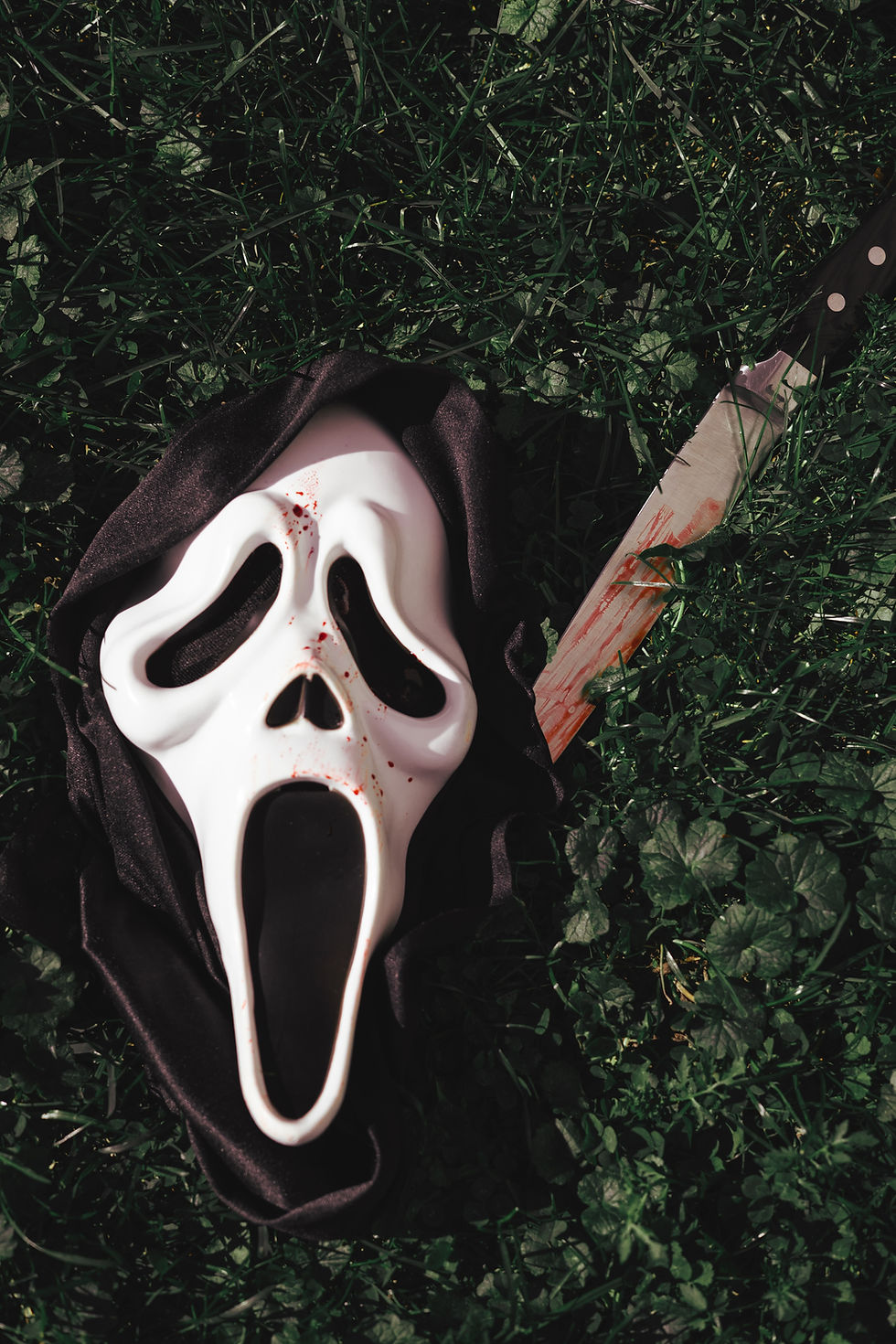How to Write Compelling Horror Villains
- Renee
- Sep 5
- 3 min read

Every horror story needs a source of terror, but not every villain is created equal. Too often, horror antagonists are reduced to one-note killers or vague supernatural forces with no real depth. A faceless threat can create short-term scares, but rarely lingers in the imagination.
The most memorable horror villains, whether human, supernatural, or somewhere in between, tap into something more profound. They embody fears, reveal truths about the characters facing them, or expose the darkness we try to deny. Writing a great villain means going beyond the surface scare and creating an entity that feels inevitable, haunting, and unforgettable.
Give Your Villain a Core Fear or Motivation
Flat villains exist only to slash or chase. Compelling villains are driven by something recognizable, even if twisted. Maybe it's hunger, revenge, obsession, or the need to spread their own suffering. When we understand, even faintly, why they act, the terror feels more personal.
Think of Freddy Krueger. He's more than a burned killer; he's vengeance personified, fueled by injustice and the sins of parents. Or The Babadook, a manifestation of grief that won't be ignored. When you tie your villain's actions to a central fear or wound, their terror resonates beyond the surface.
Make Them a Mirror to Your Protagonist
The best villains aren't random; they reflect the hero's flaws, fears, or unresolved trauma. This makes their conflict inevitable, not just coincidental. The villain forces the protagonist to face the very thing they're avoiding.
In The Silence of the Lambs, Hannibal Lecter isn't just a monster; he's a mirror. He sees Clarice's ambition, her vulnerability, and the trauma that fuels her. Their conversations are scarier than any kill scene because he exposes her so deeply. Ask yourself: how does your villain reflect, amplify, or distort the protagonist's journey?
Layer Humanity Into the Horror
Even the most supernatural entities benefit from a touch of humanity. When we glimpse something relatable, regret, pain, or longing, it complicates our reaction. We don't just fear the villain; we feel unsettled because part of us understands them.
Take Carrie. Yes, she becomes monstrous in her rage, but the root is her humiliation, isolation, and abuse. We empathize with her even as we recoil from the destruction. Layering human traits into villains blurs the lines between monster and victim, which makes for richer horror.
Control the Mystery - Reveal Just Enough
Some villains are terrifying because we know too much. Others are terrifying because we know almost nothing. The trick is balance. Over-explaining can strip away fear, but leaving everything vague can feel lazy.
The shark in Jaws works because we see just enough. Glimpses, foreshadowing, and the aftermath, without endless backstory. Michael Myers is frightening because his lack of clear motivation makes him unstoppable. Decide what your story needs: a villain whose origin explains the horror, or one whose mystery makes it worse.
Design Iconic Presence
A strong villain isn't just written, they're felt. Visual design, rhythm of speech, and the way they enter a scene all contribute to their lasting impact. The shape of their mask, the cadence of their voice, or even their silence can burn them into memory.
Think of the Cenobites from Hellraiser. Their design alone makes them unforgettable, even before they speak. Or Pennywise, whose playful voice makes his monstrous nature worse. In your script, focus on giving the villain distinct sensory markers so they leap off the page.
Tie Their Horror to a Theme
The scariest villains aren't random; they reinforce the story's central theme. If your theme is grief, your villain should embody loss or denial. If your theme is control, your villain might be the ultimate manipulator.
In Get Out, the villains embody cultural appropriation and systemic racism. They're not just scary people; they're the perfect embodiment of the film's message. By tying your villain directly to the theme, you elevate them from an obstacle to the engine of your story.
Final Thoughts
Great horror villains are never just "the bad guy." They're the shadow at the edge of the protagonist's journey, the manifestation of a deeper fear, and the presence the audience can't shake. Whether you reveal their wounds, keep them mysterious, or make them larger than life, your villain should feel essential to the story, not interchangeable.
When you craft villains who mirror, unsettle, and embody the themes of your script, you don't just scare audiences, you haunt them. And that's what horror is all about.
-Renee
📄 Want help creating unforgettable villains?
Download my Villain Development Worksheet—a step-by-step guide to building layered, terrifying antagonists who embody theme, reflect character, and stay with audiences long after the credits.



Comments